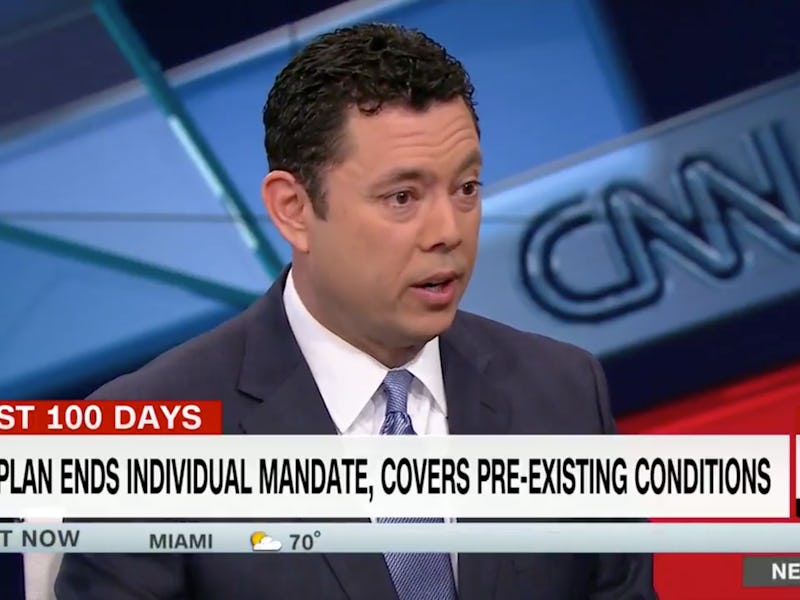4 Tech Reasons Rep. Jason Chaffetz's 'iPhone' Comments Are B.S.
You're way, way out of touch, dude.

When the iPhone 8 comes out later this year, Utah Representative Jason Chaffetz says Americans will have a choice: They can buy the phone, or they can buy health insurance. During an appearance on CNN’s “New Day,” Chaffetz said that lower-income Americans struggling to pay for health insurance may have to make sacrifices, like not spending “hundreds of dollars” on a new iPhone. The problem is, that argument is complete bullshit.
Chaffetz, who serves as chairman of the House Oversight Committee, appeared on “New Day” to defend the newly announced Republican plan to replace the Affordable Care Act, otherwise known as Obamacare. The Republican plan would remove the individual mandate (which requires Americans to purchase health insurance) and replace it with tax credits for individuals to buy health care, which industry analysts say could leave six to ten million Americans without coverage. Chaffetz thinks that it would all be fine and dandy, as long as poor people would stop buying expensive iPhones and save their money for health insurance.
“Americans have choices, and they’ve got to make a choice,” Chaffetz said. “So rather than getting that new iPhone that they just love and want to go spend hundreds of dollars on that, maybe they should invest in their own health care.”
The problem is, those comments don’t make any sense, from a technological or an economic perspective.
iPhone 5Cs kinda suck now, but they're cheap AF.
4. iPhones are Actually Cheap AF
You can get a iPhone 5c on Amazon for less than $100. Sure, if you walk into a store with a wad of cash and want to buy a iPhone 7 Plus with no contract, unlocked, and walk out of the store with it, it’ll cost nearly $969. But almost nobody does that. Every major cell phone provider offers contract deals and payment plans for smartphones, meaning users aren’t spending “hundreds of dollars” on phones, they’re spending a little over $20 a month to have a phone. It’s still unclear how much health insurance will cost under the new Republican plan, but under Obamacare, the average individual insurance plan worked out to $393 per month, which is a hell of a lot of iPhones.
3. Poor People Don’t Own iPhones Anyway
In 2014, 84 percent of all smartphones sold were Android phones. The fact of the matter is that now, with subscription models, iPhones are still prohibitively expensive for those Americans living closest to the poverty line — and Android is the only company that makes affordable smartphones.
2. You Can’t Buy an iPhone 7 With Bad Credit
Americans like the ones Chaffetz probably has in mind — lower-income Americans living close to the poverty line — are also a demographic that struggles with credit rating. Apple’s iPhone upgrade program offers payment plans on each new iPhone only for people who qualify.
1. For Lower Income Americans, Smartphones are a Vital Utility
The biggest piece of bullshit in Chaffetz’s argument is the insinuation that poorer Americans don’t need smartphones, or don’t need nice smartphones. In fact, for many Americans living near the poverty line, smartphones are a daily necessity, providing them with their only link to the internet. In 2015, the Pew Research Center found that for up to 10 percent of Americans, a smartphone is their only way to access high-speed internet. 13 percent are “smartphone dependent” in some way, which includes a large section of young adults (15 percent of all Americans age 18-29). The internet, in modern times, has become a vital utility. Without it, poor Americans can struggle to apply for jobs, utilize government services, and conduct their daily lives. So much of our society has migrated onto the internet; the inability to access its resources can severely hinder an individual’s ability to ability to find a job, connect with friends and family, consume popular culture, and yes, pay their bills, including health insurance.